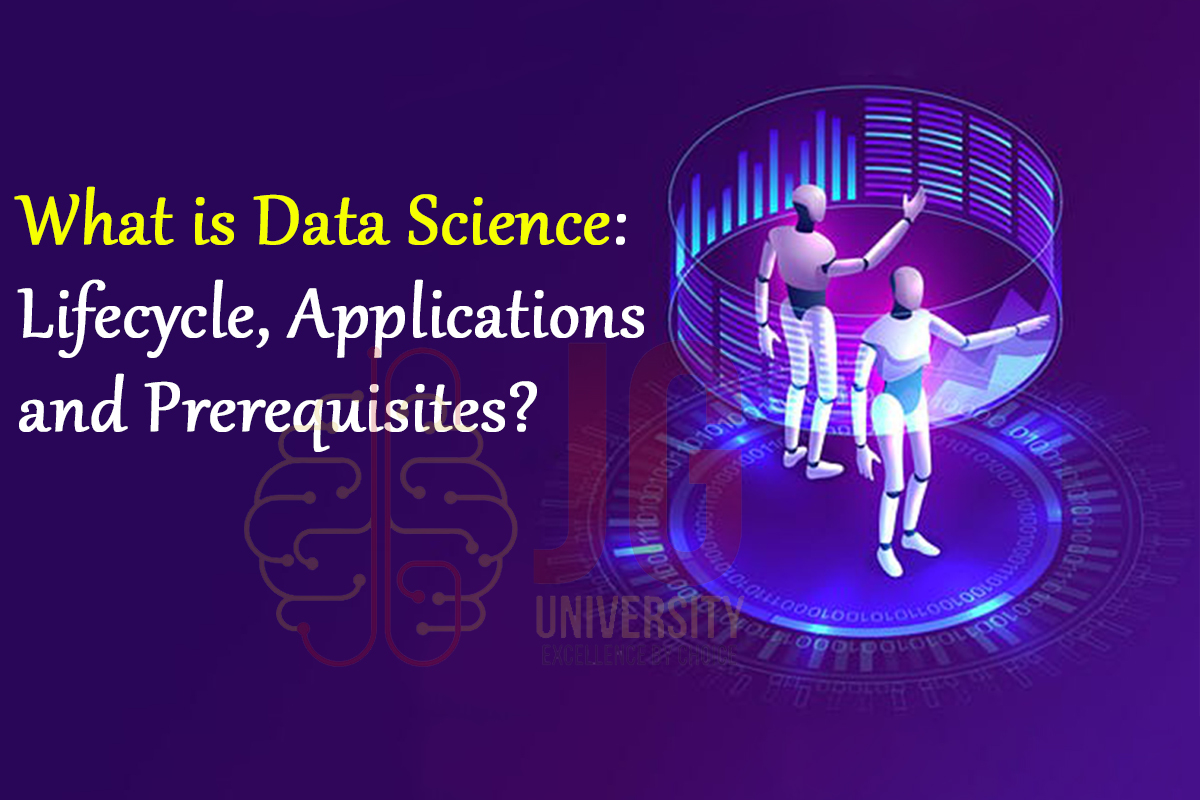What is Data Science: Lifecycle, Applications and Prerequisites?
Data science is the domain of study that deals with vast volumes of data using modern tools and techniques to find unseen patterns, derive meaningful information, and make business decisions. Data Science uses complex machine learning algorithms to build predictive models. The data used for analysis can come from many different sources and presented in various formats.
The Data Science Life Cycle:
Data science’s lifecycle consists of five distinct stages, each with its own tasks:
Capture: Data extraction, signal reception, data entry, and data acquisition. Obtaining unstructured and raw structured data is the focus of this step.

Maintain: Data Processing, Data Architecture, Data Staging, Data Cleaning, and Data Warehousing. This phase involves transforming the unprocessed data into a format that can be utilized.
Process: Data Modelling, Data Summarization, Data Mining, and Clustering/Classification. To assess the prepared data’s suitability for predictive analysis, data scientists look at its ranges, patterns, and biases.
Examine: Qualitative, Text Mining, Exploratory/Confirmatory, Predictive, and Regression Analysis. This is where the lifecycle really gets juicy. At this point, the data are subjected to numerous analytics.
Communicate: Decision-making, business intelligence, data reporting, and data visualization. In the last stage, analysts format the analyses into reports, graphs, and charts that are simple to read.
Data Science Prerequisites:
Before you begin learning about data science, you need be familiar with the following technical ideas.
Machine Learning: The foundation of data science is machine learning. In addition to having a foundational understanding of statistics, data scientists must have a firm grasp of machine learning.
Modelling: Using what you already know about the data, mathematical models let you quickly calculate and make predictions. Machine learning also includes modelling, which is determining which algorithm is best suited to handle a certain problem and how to train these models.
Statistics: The foundation of data science is statistics. Having a firm grasp of statistics can enable you to get more insights and acquire more significant outcomes.
Programming: To carry out a data science project successfully, some programming knowledge is necessary. The two most popular programming languages are R and Python. Python is particularly well-liked since it supports a variety of data science and machine learning libraries and is simple to learn.
Database: The operation, management, and extraction of data from databases are all skills that a competent data scientist must possess.
Applications of Data Science:
There are Various Application of Data Science including Gaming, Healthcare, Image Recognition, Recommendation Systems, Logistics, Fraud Detection, Internet Search, Speech Recognition, Targeted Advertising and Airline Route Planning.







